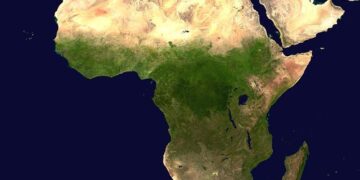To this day, historians can’t fully explain the mysterious disappearance of the thriving ancient society of Tartessos. New questions arise as excavations reveal more about the advanced, multicultural civilization that seemingly vanished overnight.
Rising to power along the southern coast of the Iberian Peninsula, Tartessos is believed to have strong ties to a group of seafaring traders, the Phoenicians, who first arrived in the Iberian Peninsula in the 10th century B.C. They originally hailed from modern-day Lebanon, Syria, and northern Israel and were known across the Mediterranean as skilled sailors and expert merchants. Given the name “Phoenician” by the Greeks for the exquisite purple dye they crafted, they never created a unified kingdom.
(Purple Reign: A passion for purple built the Phoenicians’ vast trading empire.)
Tartessos is believed to be the resulting outgrowth of Phoenician culture combined with the Indigenous culture of peoples living on the Iberian Peninsula. Some scholars still believe that Tartessos itself could predate these Phoenician influences, and new discoveries continue to fuel the debate.
Legends of Tartessos
Tales of Tartessos stretch all the way back to the mid-seventh century B.C. A Greek trader called Colaeus set sail from his home island of Samos, off the coast of present-day Turkey. He was headed for Egypt, but during the voyage Colaeus’s ship was surprised by strong winds from the east that pushed it westward across the Mediterranean, beyond the Pillars of Hercules and into the Strait of Gibraltar.
Colaeus and his fellow sailors arrived in Tartessos, a “commercial emporium” previously unknown to merchants from Greece. Colaeus began to trade with the Tartessians and turned a large profit, mainly thanks to the silver (over a ton and three-quarters) that he amassed there.

These feet, from the Tartessian site at El Turuñuelo, are all that remain of the oldest Greek statue yet found in the Iberian Peninsula.
Proyecto Construyendo Tarteso
This traveler’s tale is found in Greek historian Herodotus’s Histories, written in the fifth century B.C. And although the narrative is no doubt embellished, Herodotus did live for a time in Samos, where he may have heard of Colaeus’s adventure. Other classical texts also contain references to a town called Tartessos in the lands around the Gulf of Cádiz in the southern Iberian Peninsula. From these mentions, historians and archaeologists are working to build up a picture of this enigmatic civilization steeped in legend.


Tartessian writingFrom the sixth century B.C., the communities in the southwestern Iberian Peninsula began to use their own writing. Preserved texts are mostly inscriptions on stelae that were found in the Portuguese Algarve and Spain’s western Andalusia and Extremadura, like the pictured and stela IV from Cabeza del Buey and stela VI from Fonte Velha. Although the writing has not been deciphered yet, scholars have confirmed that it was written from right to left and consisted of 51 signs.
Sebastián Celestino Pérez (Top) (Left) and Rodrigo Pinto/MMSR (Bottom) (Right)
Tartessos’s beginning
One of the most controversial issues has been when Tartessos was founded. Until the late 20th century, most experts believed that Tartessos emerged as far back as the Bronze Age. The culture was thought to have spread over a large area in the southwestern Iberian Peninsula, between the settlements of Huelva, Seville, and Cádiz—the Tartessian core. If so, Tartessos would have existed even before the first Phoenician colonies were established in the 10th and ninth centuries B.C.
(How a Phoenician queen became a notorious villain in the Bible.)
Changing waters

The Doñana wetlands now form part of a national park in Spain.
Irene Lorenz/Age Fotostock
Tartessian culture flourished in the lower Guadalquivir River area (around modern-day Seville). But 3,000 years ago, the geography of the area was completely different from today. The mouth of the river was located much farther inland, and it emptied its waters into a huge estuary called the Tartessian Gulf. The Doñana marshes are remnants of that ancient landscape.
However, as archaeological excavations continue, this hypothesis seems increasingly unlikely. Although some authors speak of a period called the Tartessian Late Bronze Age, there is little strong evidence to support the existence of a defined settlement in the southwestern peninsula during the 12th and 11th centuries B.C.

A seventh-century B.C. bronze jug is topped with a deer’s head and has a handle shaped like a horse’s head. It belongs to the treasure found at the La Joya necropolis in Huelva, Spain.
SFGP/Album
What may have existed was an emerging social organization, based on agriculture and the export of raw materials from mining. Archaeologists have found evidence of a community at nearby Huelva during this period. Artifacts unearthed at the site and elsewhere suggest that the community was skilled at trading with the Atlantic world. Objects made of copper from Huelva have been found as far away as France and the British Isles. The well-established trading links would have helped them profit from the abundant silver mines in the area, such as those in Aznal cóllar, northwest of modern-day Seville.
(See Spain’s fabled Alhambra as few have ever before.)
Phoenicians in Iberia
These early trading communities around the Gulf of Cádiz experienced a profound transformation with the arrival of the Phoenicians. It was in the ninth century B.C. that traders from the flourishing cities of the eastern Mediterranean settled permanently in the southwest of the Iberian Peninsula.
Phoenician colonizers started by building temples to their gods along the coast. These religious complexes not only served spiritual purposes, they also played a key role in commerce by providing a neutral space for trading. The temple of Melqart, or Hercules, near Cádiz seems to have had this dual purpose. Very soon the Phoenicians built permanent establishments, called factories, and later the first colonies. One of these new city colonies, Cádiz, would become the most important economic, political, and religious center in the region. It served as the main port for exporting silver, tin, and salted fish. These mining and agricultural products came both from Huelva itself and from inland.
(2,600-year-old wine ‘factory’ from Phoenicians unearthed in Lebanon.)

Phoenician architecture featured many right angles, and the structures at the Casas del Turuñuelo site, excavated from 2014 (in a reconstruction), show this influence.
Illustration by R. Casala, Proyecto Construyendo Tarteso
The Phoenicians brought innovations to the areas they settled: iron, hybrid animals such as the mule, plant species like grapevines and olive trees, the potter’s wheel, and ceramic kilns. They also introduced the alphabet, an essential element for trade. Even the architecture would be influenced: The Phoenicians favored orthogonal structures (with right angles), which generated a much more complex urban layout. Over the course of the ninth and eighth centuries B.C., these things would transform the economy and way of life of the local peoples.

This sixth-century B.C. necklace features seven seals of Egyptian scarabs, a Phoenician motif adopted in Tartessos. The necklace is part of the El Carambolo hoard, found in 1958.
Oronoz/Album
During this initial period of colonization, local Iberian communities gradually adapted to the presence of the eastern settlers. Archaeologists are looking for more insight as to how this integration developed, but it seems likely that people migrated from inland regions to the coastal colonies. The work force swelled. Miners and farmers arrived as well as the artisans and construction workers needed for the new cities, temples, and communication routes. In the Guadiana and Tagus Valleys, the dominant warrior elite may have supplied labor in exchange for access to the Phoenician’s iron and technical innovations. In these inland areas, local traders would have provided gold, tin, and agricultural products to the Phoenicians.
Although the Phoenicians had a huge impact on the colonized territories of the Iberian Peninsula, the changes were experienced unevenly. In sparsely populated areas, such as the Guadalquivir Valley and the Bay of Cádiz, the incoming Phoenicians were able to found their own cities and incorporate the Indigenous population. In Huelva, a more established economy and defined social structure already existed, rendering Phoenician influence weaker. It was in the eighth century B.C. that interactions between the Phoenicians, the Indigenous communities, and the populations of the interior gave rise to the culture now termed Tartessian. The word “Tartessos” first appears in Greek sources in the following century.
(This 2,400-year-old statue reveals insights into ancient Spain.)

The sanctuary of El CaramboloRecent excavations in the place where the El Carambolo treasure was found in 1958 have brought to light the remains of a sanctuary that combined activities related to both religion and commercial exchange. First erected by the Phoenicians at the end of the ninth century B.C., it was later enlarged and remodeled several times. This reconstruction shows what the building looked like in Phase III, in the early seventh century B.C. The walls were made of plastered adobe, and the floors were made of red clay. It is believed that one of the rooms was dedicated to the cult of Astarte and another to Baal. In the latter, an altar in the shape of a stretched-out bull hide was found, a feature common to all Tartessian places of worship.
Illustration by Rocio Espin Pinar
Archaeological evidence
Contact between Phoenician colonists and Indigenous people of the peninsula sparked remarkable economic development with work for potters, goldsmiths, blacksmiths, builders, stevedores, and sailors. Maritime trade defined the society. It was labor intensive, involving many workers to fell trees, build ships, and create vessels such as amphorae to move the goods.
These changes likely caused tensions between the Tartessian communities who found themselves enjoying new, lucrative relations with the Phoenicians and other Indigenous interior communities who also sought to control the new economic resources. Tartessian culture saw an emergence of new social groups and a much more complex social organization. The society lasted some 400 years; how elites maintained control is not clear. Neither Tartessian sites nor tombs provide evidence of much weaponry.

The goddess Astarte sits in the middle of a seventh-century B.C. bronze horse bit.
Oronoz
Although Tartessos had some notable cultural traits, it wasn’t a homogeneous society and shouldn’t be considered a united kingdom, let alone an empire. Herodotus does mention a kingdom ruled by Arganthonios but is referring to a chief within what the Greeks called Tartessos. There would have been other kings or leaders, with each ruler maintaining their political independence despite interconnected economic interests. This social structure was more heterarchical than hierarchical, involving various leaders and a network of power.
Mixed marriages between Indigenous people and Phoenicians consolidated the integration of the two communities. This practice would explain the discoveries made in inland areas far removed from the Tartessian nucleus, such as the treasures of Aliseda and Talaverilla (both in Cáceres) and the tomb of Casa del Carpio (Toledo). Much of the rich hoards found at these sites came from local workshops and were produced by artisans trained in Phoenician goldsmithing techniques. The pieces include many motifs of the Phoenician religion, with representations of the gods El, Baal, and Astarte. In Extremadura and the Tagus Valley, archaeologists have found mixed trousseaux in necropolises of the Tartessian nucleus, such as Las Cumbres in El Puerto de Santa María (Cádiz). They feature both Indigenous and Phoenician elements.
(New analysis unveils the origin of the storied Carambolo treasure.)
In 1920, a collection of 285 gold objects, including this seventh century B.C. necklace, was discovered in the town of Aliseda in Cáceres, Spain. The objects are now on display at the National Archaeological Museum in Madrid. The treasure, made by a local workshop at the end of the seventh century B.C., shows how Phoenician goldsmithing techniques such as filigree and granulation had been adopted by the artisans of Tartessos. The iconography depicted in the pieces reflects the mythology and religion of the eastern Mediterranean as well as that of the ancient Atlantic world.
Pedro Carrión/Album
Recently, large adobe constructions were uncovered beneath a tumulus by the Guadiana River, providing more evidence of Tartessian culture and architecture mixing with Phoenician influences. The Casas del Turuñuelo site in Guareña (Badajoz), which was used until the late fifth century B.C., includes the best preserved protohistoric building in the western Mediterranean. The banqueting hall is complete with bronze vessels. Ongoing excavations confirm this structure is characteristic of the early Tartessian culture that emerged in the eighth century B.C. from the interactions with Phoenician colonizers. The culture left a much deeper and more extensive mark than previously thought.
After a period of prosperity during the seventh century B.C., Tartessos fell into decline. Until quite recently, archaeologists believed that Tartessian culture came to an abrupt end in the sixth century B.C. But the latest findings in the Guadiana Valley show that after this period of decline in the Tartessian core, the culture itself continued to spread to some inland territories. Investigation into Tartessos continues with new discoveries sure to illuminate the mysteries of this Bronze Age culture.
Horse hecatomb

Sacrificial animals found on the terrace of the Casas del Turuñuelo in Guareña, Spain
Proyecto Construyendo Tarteso
In 2016, archaeologists excavating the Casas del Turuñuelo site in Guareña, Spain, uncovered a stairway leading to a courtyard, where they found the skeletal remains of more than 50 animals, mostly horses, mules, and donkeys. Early theories speculated that the animals had all been killed at once in a dramatic sacrifice before Tartessians abandoned the site. But a 2023 study revealed that the yard was regularly used for mass animal sacrifice for several years.
>>> Read full article>>>
Copyright for syndicated content belongs to the linked Source : National Geographic – https://www.nationalgeographic.com/premium/article/tartessos-phoenician-ancient-spanish-culture































